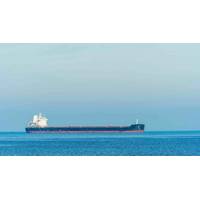For centuries, sailing has been about how to catch the wind. Now it is becoming a question of how to catch the sun. Australian inventor Robert Dane has designed and built the world's first solar-powered ferry, the Solar Sailor, which is driven by both solar and wind power and took top prize in this year's Australian Design Awards.
"Solar energy and boats are at the same stage as where the Wright Brothers were when they were first developing the plane," says Tom Godfrey from the Australian Design Awards. "The global potential for such an invention as the Solar Sailor is unlimited."
The Solar Sailor offers an environmentally friendly alternative to conventional diesel-powered craft and has been operating commercially on Sydney Harbor for the last six months. It combines four sources of energy -- sun, wind, battery power with stored solar energy and a back-up fuel generator.
Capable of speeds of up to 7.5 knots on wind and solar power alone, the ferry's solar wings or fiberglass solar panels act as sails while absorbing sunlight and storing solar energy in batteries which power the ferry's electric motor.
"We angle our solar panels to the sun in two planes which increases the amount of energy we get from the sun by 40 percent," Dane says. "But also we can use that same structure to do another job which is also the sail, and so these wing sails actually provide propulsion to the vessel just like a soft sail does," he adds.
The solar ferry's hybrid power system of renewable and non-renewable energy is controlled by an onboard computer.
The computer monitors the sun and the wind and adjusts the angle of the solar wings to absorb most sunlight. If wind and sun are not readily available, stored energy in the batteries can run the electric motor for up to five hours. A fuel-powered generator is a last resort.
"If the batteries are too low, then (the computer) turns the generator on so the boat is always able to meet a commercial schedule, or get from point A to point B no matter what the conditions," Dane explains. The Solar Sailor has minimal wash and makes no noise, making it suited to urban waterways.
"When we do use the generator, we burn probably about 90 percent of what you would burn for a conventional vessel in terms of fuel, but we only turn the generator on 10 percent of the time, so there's less greenhouse gas emissions," Dane says.
The Solar Sailor technology had an unlikely genesis.
While reading a book on the evolution of insects, Dane was struck by how insects used their wings as solar collectors to warm themselves up before flying.
"When I read that, I realized there was a precedent in nature for what we were going to do, which was to use a solar wing to collect solar energy and also to sail," he says. "Given that 90 percent of species on the planet are insects and 90 percent of insects fly, using their wings as solar collectors, it made sense to apply this logic to boats on Sydney Harbor where there is an abundance of wind and sun."
Dane sees the solar wings technology as the future of sailing, with applications ranging from urban transport to commercial cargo ships.
He says the bigger the boat the more feasible the solar technology as the solar batteries needed to store the sun's energy and propel a bigger boat become lighter in comparison to the weight of a larger vessel.
While the cost of the technology is about 25 percent more expensive than that of a conventional motor cruiser, Dane believes the low maintenance required by the electric motor would eventually compensate for the initial price.
"We anticipate that the operator would get that back in maintenance and fuel savings within three to five years, depending on the usage," he predicts.
Dane says that transport officials in San Francisco, who are looking at expanding the city's ferry fleet, have expressed an interest in Solar Sailor and he is also targeting ferry and shipping operators in Japan and China, two major ferry markets.
Captain Cook Cruises, the largest ferry tour operator on Sydney Harbour, is leasing the first Solar Sailor and says it has been a hit among both tourists and locals.
"People are attracted to the clean technology," says the company's Allison Haworth. "It is an excellent way to utilize natural resources to provide a unique and environmentally sensitive experience of Sydney Harbor." - (Reuters)


